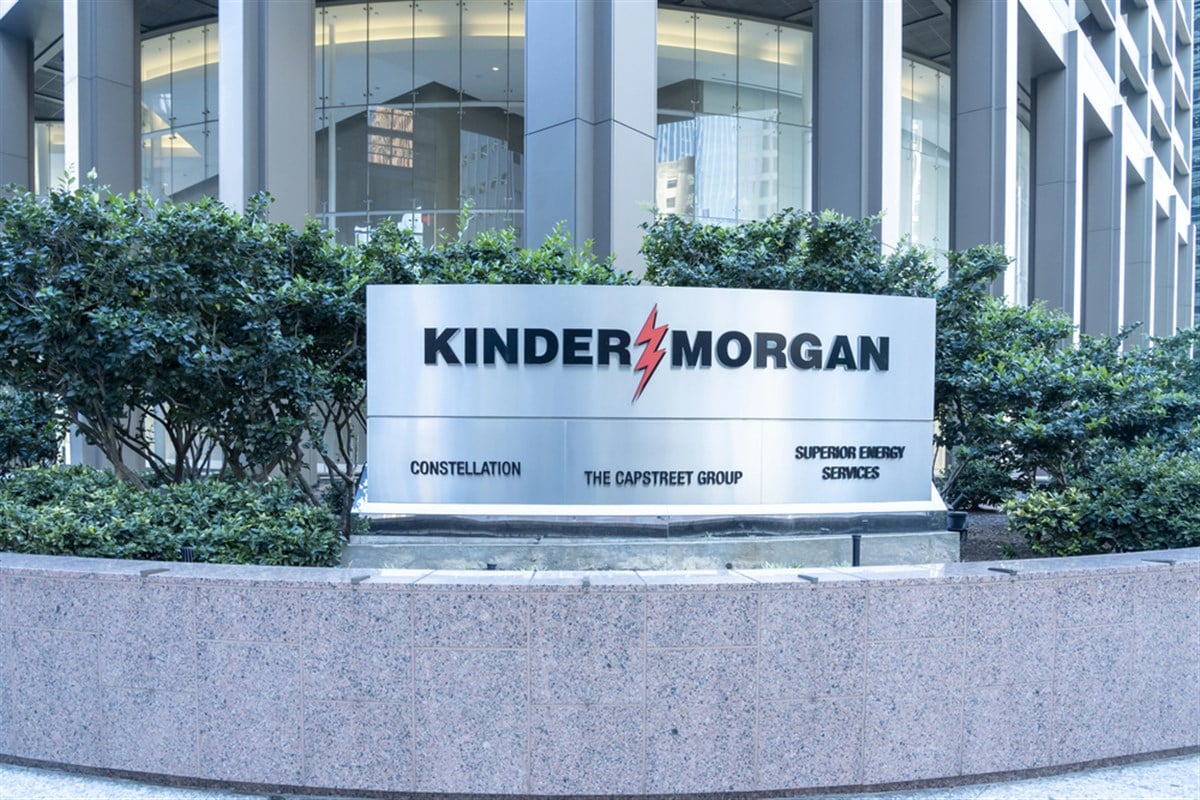Kinder Morgan Inc. (NYSE: KMI) reported earnings after the market closed on October 22. The company’s revenue came in about 4.6% above expectations, but a slight earnings miss sent the stock lower by about 1.5% in after-hours trading.
Investors have high expectations for corporate earnings. As Netflix showed, a miss on earnings, no matter how slight, can send a stock lower.
However, this is likely a case of algorithmic programs selling first and analyzing later. If you have a position in KMI stock or are considering one, there was nothing in the report that should keep you from being bullish.
Table of Contents
Kinder Morgan Explained
Kinder Morgan is one of the largest midstream energy companies in the United States. The company owns and operates a network of pipelines that spans approximately 80,000 miles across North America.
The company’s primary revenue comes from transporting natural gas. In fact, about 40% of the natural gas in the United States moves through Kinder Morgan’s pipeline.
The takeaway for investors is that companies like Kinder Morgan are the toll booths of the energy industry. They get paid through long-term, fee-based contracts to transport, store, and process oil and gas products.
The Impact of Crude Oil on Kinder Morgan’s Business
Kinder Morgan gets paid to move crude oil and natural gas no matter how much the commodity costs. So Kinder Morgan’s stock price is not as sensitive to crude oil price movements.

This is important to understand because, at first glance, an investor could think that the reason for the company’s miss on earnings, no matter how slight, was due to crude oil prices that have recently fallen under $60 per barrel.
Another factor to consider relative to crude oil prices is that approximately 60% to 70% of Kinder Morgan’s business is about transporting natural gas, not crude oil. However, while Kinder Morgan isn’t directly affected by crude prices, stronger oil demand can lift its volumes and utilization rates — a tailwind for revenue and earnings.
Why Kinder Morgan is a Buy?
The buy case for Kinder Morgan in 2025 centers around its natural gas business. Demand for natural gas and liquefied natural gas has never been higher. That’s not hyperbole. One of the dominant investment themes in 2025 has been the need for infrastructure to meet the insatiable demand from artificial intelligence.
This will require a supply of energy to power these data centers. The future is likely to bring clean energy solutions, like nuclear. But that’s years, if not decades, from being a reality.
In the meantime, natural gas is a cheap and clean-ish alternative to carbon fuels. That will be a primary revenue driver for Kinder Morgan that will keep a high floor on the company’s revenue and earnings.
Putting It All Together in KMI Earnings
Kinder Morgan generated $4.15 billion in revenue. As noted above, that was about 4.6% higher than estimates and about 12% higher on a year-over-year (YoY) basis. And even while the company missed earnings estimates by one penny, the 29 cents per share was still 16% higher YoY. It was also one cent higher than the prior quarter.
Looking specifically at natural gas. Transport volume increased 6% YoY. That growth was primarily driven by LNG deliveries and expansion projects, and according to Kinder Morgan’s chief executive officer (CEO), Kim Dang, that’s not likely to slow down anytime soon.
Dang said, “”KMI is seeing an opportunity set more robust than at any time in the company’s history…U.S. LNG nameplate capacity is expected to more than double by 2030. We currently have long-term contracts to move almost 8 billion cubic feet per day of natural gas to LNG facilities.”
And if the current quarter is any indication, that demand is going to reward shareholders. The company reported cash flow from operations of $1.4 billion and free cash flow (FCF) after capital expenditures of $0.6 billion. Those numbers were up 13% and 5% respectively, YoY. Investors also get a quarterly dividend that has a 4.24% yield and pays 29 cents per share.
KMI Stock Has Room to Grow
KMI stock is up about 11% in the last 12 months. That’s below the stock’s total return over the last three to five years. However, it’s better than the average of the stock over longer periods.
That puts the stock in a sweet spot. Plus at around 21x forward earnings, investors are getting a stock that’s trading at a discount to its historic average.

Leave a Reply